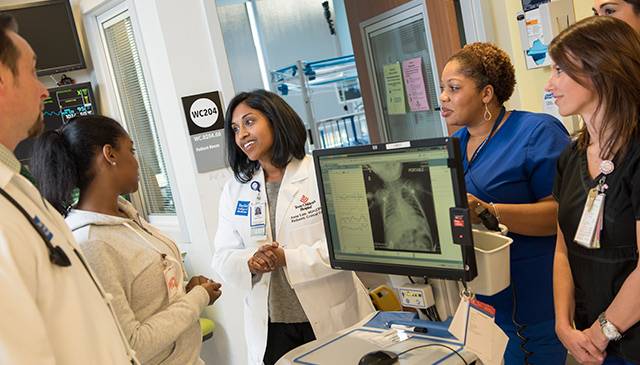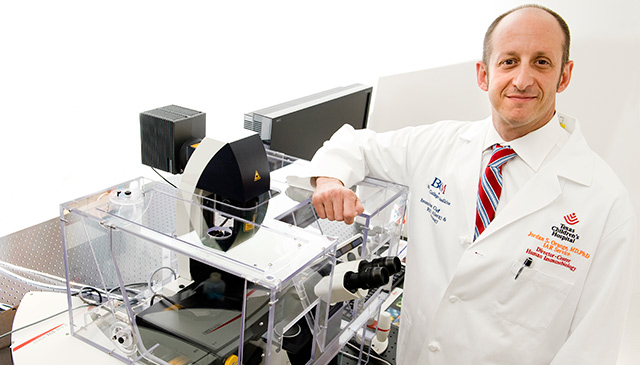 Texas Children’s recently received an impressive report card from The Joint Commission with surveyors commending the hospital for demonstrating several best practices.
Texas Children’s recently received an impressive report card from The Joint Commission with surveyors commending the hospital for demonstrating several best practices.
“Our survey results are a great indication that we are meeting the expectation of quality care for our patients,” said Texas Children’s President and CEO Mark A. Wallace. “This should only propel us to continue our focus on providing safe, quality care every single day for every one of our patients.”
Every three years, Texas Children’s undergoes an accreditation process to ensure our delivery of high-quality patient care. On May 1, the Joint Commission survey team arrived at Texas Children’s for a 5-day unannounced survey. The surveyors consisted of an administrator, a pediatrician and ambulatory specialist, four pediatric and OB/GYN nurses, and a life safety engineer.
What Joint Commission noted
The survey is intended to assess the organization’s compliance in patient care areas that contribute to positive outcomes and to measure and improve performance. The Joint Commission team was very impressed with our improved outcomes in asthma, diabetes, radiology efficiency and flow, patient flow and surgical complications.
The team also identified several best practices observed during the survey including:
- Time out processes across the system
- NICU infection control practices
- Error prevention technology in the anesthesia and pharmacy areas
- Critical lab documentation
- Simulation of new buildings and processes for latent safety threats
“The Joint Commission survey team visited several Texas Children’s facilities to evaluate patient care processes through on-site observations, staff interviews and tracer methodology,” said Texas Children’s Quality and Safety Director Elaine Whaley. “This year, Joint Commission implemented a new survey methodology called Survey Analysis for Evaluating Risk (SAFER), a matrix that uses a color-coded grid to evaluate the likelihood of harm to our patients, staff and visitors based on the number of occurrences.”
The surveyors were impressed with the knowledge and confidence exhibited by staff and faculty who participated in the tracer interviews. They complimented them on their ability to navigate Epic and explain the continuum of care, and they were impressed by our staff’s ability to talk about quality projects and outcomes.
How we prepared for the survey
Preparing for regulatory surveys is an ongoing process underscored by Texas Children’s daily focus on patient safety and high quality programs. Texas Children’s uses a consultant on an ongoing basis to review our processes and evaluate our survey readiness. The information provided by the consultant helps the organization fine tune.
“The results we get from area tracers during the preparation process provide information we need to develop and implement an organization-wide readiness education program,” said Danyalle Evans, Texas Children’s assistant director, System Accreditation and Readiness. “We regularly evaluate our internal processes against regulatory guidelines to identify opportunities for improvement. Regulatory surveys are valuable evaluation tools, but we have a deliberate focus on the quality and safety of our patients’ care every day.”
The Joint Commission accredits and certifies more than 20,500 health care organizations and programs in the United States. Approximately 77 percent of the nation’s hospitals are accredited by The Joint Commission.







